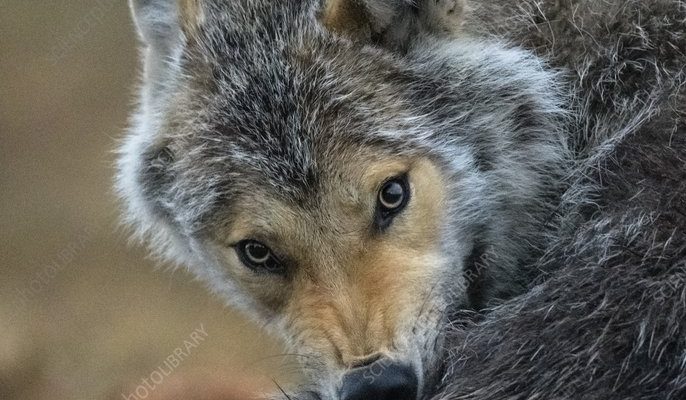
Imagine for a moment that you’re enjoying a peaceful day in the woods. Suddenly, you see a deer scratching itself against a tree, seemingly lost in thought. It’s not just a casual scratch; it’s a response to an uncomfortable reality lurking beneath its fur. Wolf worms can invade wild animals, prompting behavioral changes as they try to relieve their discomfort. So, let’s explore how these parasites influence the grooming behavior of various species and the fascinating adaptations they develop in response.
What Are Wolf Worms?
First things first—let’s clarify what wolf worms actually are. These are not your typical worms you might find in the garden. Instead, they are the larvae of the botfly, a type of fly that lays its eggs on the skin of a host animal. When the eggs hatch, the larvae burrow into the skin, causing irritation and often leading to infection. This invasion can cause considerable discomfort, making the affected animal more likely to engage in grooming behaviors to alleviate the itch and pain associated with these parasites.
Wolf worms are particularly known for affecting mammals like deer, cattle, and even some carnivores. The presence of these larvae can lead to a range of grooming responses, as animals instinctively try to rid themselves of these unwelcome guests. In many ways, this grooming is not just about hygiene; it’s a survival tactic.
The Impact of Wolf Worms on Wild Animals
Animals infested by wolf worms can experience a variety of symptoms, from mild irritation to severe health issues. The larvae can cause painful lesions, which often lead to secondary infections. This is where grooming comes into play. Animals will often scratch, lick, or even rub against objects to relieve the discomfort.
This grooming behavior goes beyond just a simple scratch. For example, deer infested with wolf worms might spend hours grooming themselves, focusing on areas where they feel the larvae are burrowing deeper. This not only helps soothe their skin but can also help dislodge the larvae if they’re close to the surface. It’s fascinating to see how an animal’s behavior adapts in response to a threat.
Grooming Techniques in Response to Wolf Worms
So, what does grooming look like in animals dealing with wolf worms? Different species exhibit various techniques based on their anatomy and environment. Here are a few examples:
- Scratching: Many animals, like deer and elk, will scratch areas of their body against trees or rocks. This helps dislodge the larvae and also provides immediate relief from the irritation.
- Licking: Some animals may use their tongues to reach areas that are harder to scratch. This is particularly common in cats and dogs.
- Seeking Help: Social animals, such as primates, might enlist the help of their friends by engaging in mutual grooming. This not only helps them but strengthens social bonds.
These techniques highlight the adaptability of animals in response to discomfort, showcasing not only their survival instincts but also the social aspects of grooming when it comes to mutual aid.
Behavioral Changes Due to Infestation
When animals become infested with wolf worms, it’s more than just a physical issue; it can also affect their behavior. For instance, animals may become more agitated or anxious due to the constant discomfort caused by the larvae. This can lead to changes in social dynamics within a group, as those infected might isolate themselves or become more defensive.
Additionally, the time spent grooming and trying to rid themselves of the larvae can take away from other vital activities. For example, a deer that spends hours grooming might have less time to forage for food or be alert to predators. This shift in behavior can have wider implications for their survival and that of the larger ecosystem.
Why Grooming Matters for Wildlife Survival
Grooming is crucial for many reasons beyond just looking good. It serves as a vital behavior for the health of wild animals. First, it helps remove parasites like wolf worms, but it also plays a role in regulating body temperature and maintaining skin health.
Here’s the thing: while grooming might seem like a simple action, it has significant consequences for an animal’s overall well-being. Healthy animals are better at foraging, mating, and evading predators. When parasites invade, and grooming becomes a critical response, it influences everything from population dynamics to ecosystem health.
Comparing Grooming Responses Across Species
Interestingly, not all species respond to wolf worm infestations in the same way. For example, while a deer might resort to scratching and licking, a larger animal like a bear may have its own unique strategies. Bears have been known to roll on the ground or rub against trees to alleviate discomfort.
This variety in grooming responses highlights the adaptability of wildlife. By comparing how different species respond to similar threats, we can better understand the relationship between animal behavior and health. It can also inform conservation efforts, as knowing these responses can help us create better wildlife management strategies.
In the grand scheme of things, understanding how wild animals groom in response to wolf worms reveals so much about their lives. It’s a blend of instinct, adaptation, and survival. Each scratch, lick, and roll is more than a simple action; it’s a fundamental part of how these creatures maintain their health amidst challenges posed by nature.
As we continue to study these fascinating behaviors, we realize that even the smallest parasite can have a big impact on the animal kingdom. So next time you spot an animal grooming itself, remember—it’s not just about keeping clean; it’s a dance of survival against the odds. Whether it’s the deer in your backyard or a majestic elk in the wild, their grooming habits tell a story of resilience, adaptation, and the intricate web of life that we’re all part of.

